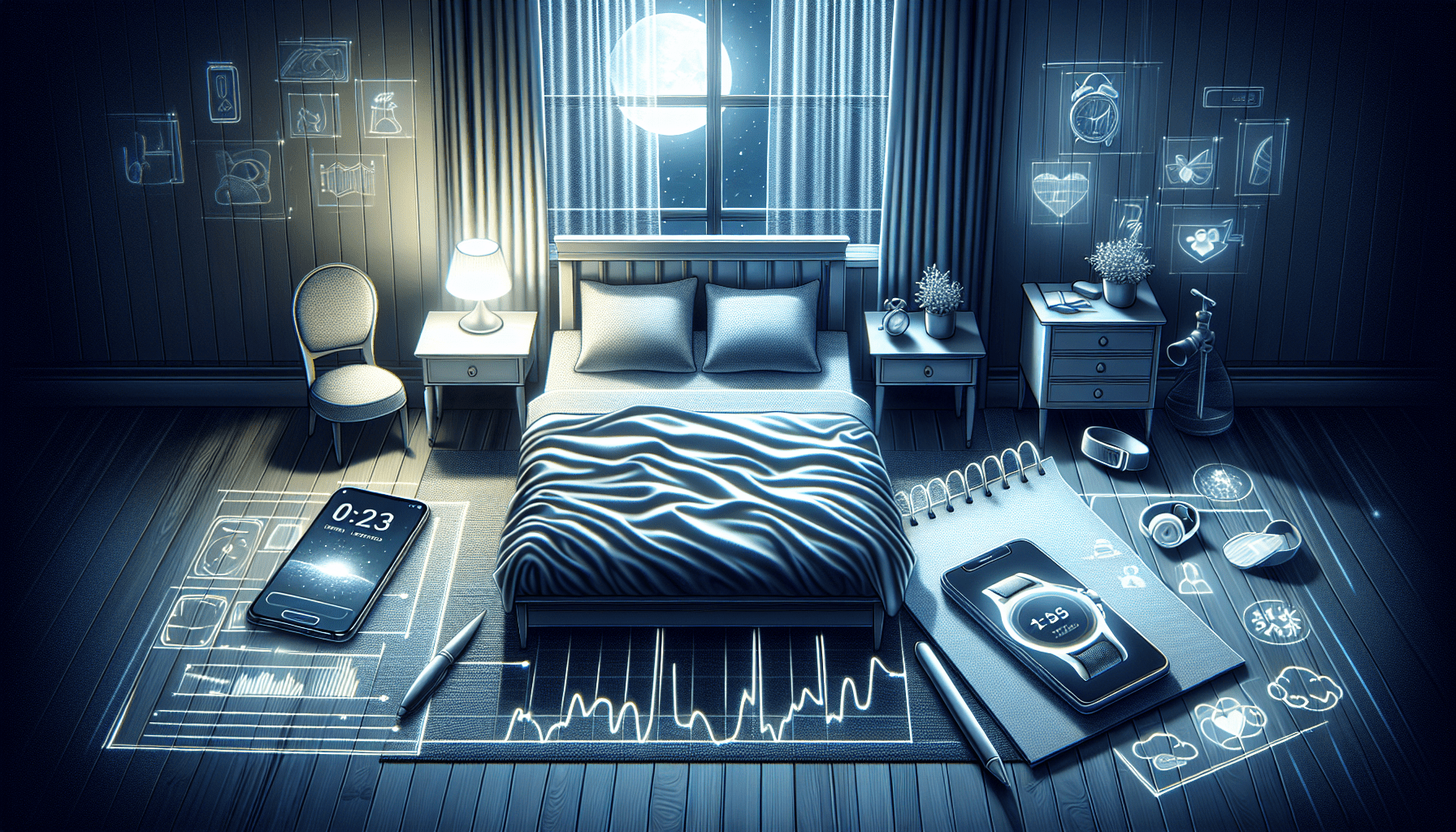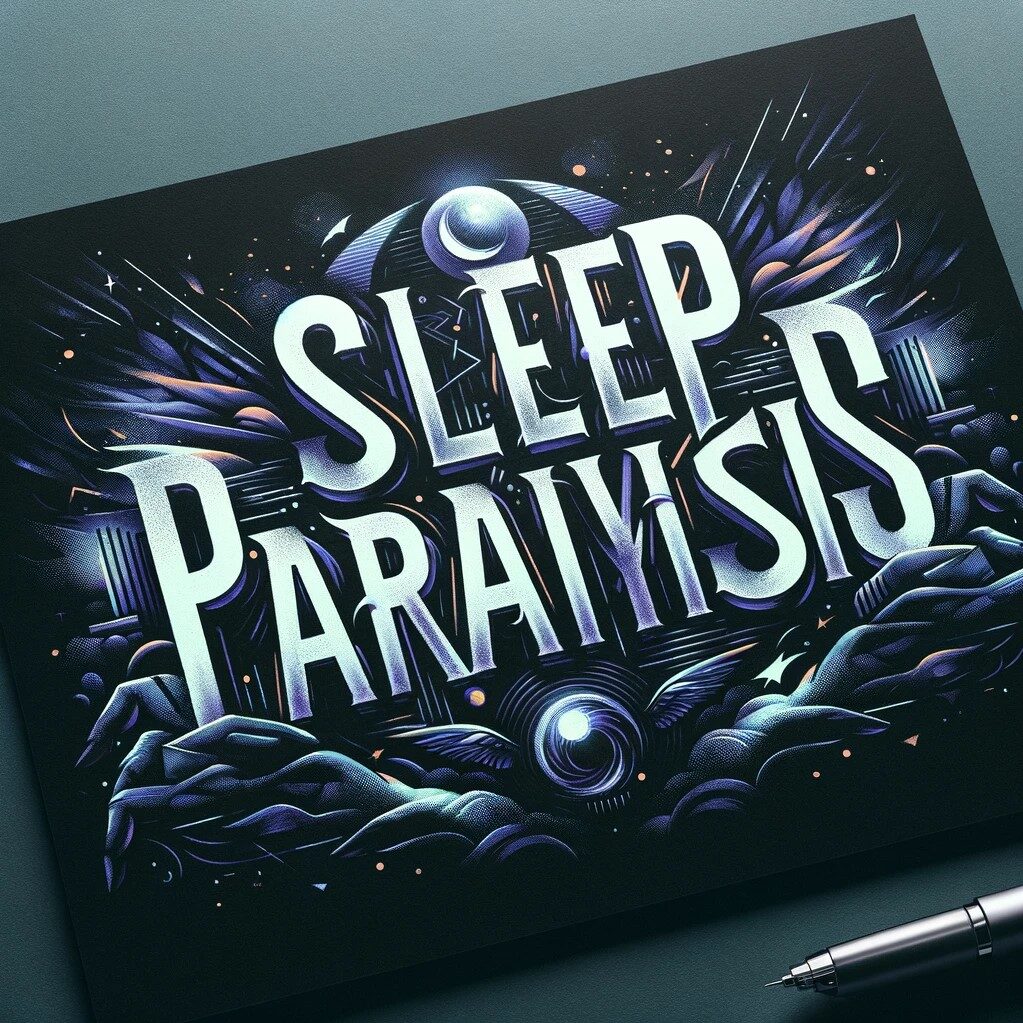Are you tired of experiencing sleep paralysis and being left feeling frightened and helpless? If so, you’re in luck! This article will guide you through the process of tracking and analyzing your sleep patterns to identify potential triggers for sleep paralysis. By gaining a deeper understanding of your sleep cycles and the factors that contribute to this phenomenon, you can take proactive steps towards preventing future episodes and enjoying more restful nights. So, grab a cup of tea, get comfortable, and let’s embark on a journey to better sleep together!
Keeping a Sleep Diary
Record your sleep schedule
Keeping track of your sleep schedule is a crucial step in understanding your sleep patterns and identifying potential triggers for sleep paralysis. Start by noting the time you go to bed and the time you wake up each day. Be consistent in recording this information and try to stick to a regular sleep routine.
Note any activities or events before bedtime
What you do in the hours leading up to bedtime can greatly impact the quality of your sleep. By keeping a sleep diary, you can identify any activities or events that may be triggering sleep paralysis. Make a note of things like excessive screen time, consumption of caffeine or heavy meals, as well as any stressful situations or emotional events that occurred before bedtime.
Track any potential triggers for sleep paralysis
Sleep paralysis can be influenced by a variety of factors, and recording these triggers can help you identify patterns and find ways to prevent episodes. Keep track of things like sleep position, sleep environment, nightmares or vivid dreams, and any physical or emotional stressors you may experience. By tracking these potential triggers, you will gain a better understanding of your sleep paralysis episodes and how to manage them effectively.
Using Sleep Tracking Apps
Research and choose a suitable sleep tracking app
With the advancement of technology, there are numerous sleep tracking apps available that can help you monitor your sleep patterns. Take some time to research and choose a sleep tracking app that suits your needs. Look for features such as detailed sleep analysis, alarm clocks that wake you up during your lightest sleep phase, and integration with other health apps or devices.
Install and set up the app on your mobile device
Once you have identified the sleep tracking app that meets your requirements, it’s time to install and set it up on your mobile device. Follow the app’s instructions to ensure proper installation and grant the necessary permissions. Make sure to input accurate information about your sleep schedule and any other details that the app requires for accurate tracking.
Allow the app to track your sleep patterns
To obtain accurate data and insight into your sleep patterns, it’s important to allow the sleep tracking app to monitor your sleep. This may involve placing your mobile device on your bed or using wearable devices such as smartwatches or fitness trackers that integrate with the app. By giving the app permission to track your sleep, you will be able to analyze and understand your sleep patterns in detail.

Monitoring Sleep Environment
Create a comfortable and conducive sleep environment
Your sleep environment plays a significant role in the quality of your sleep. Make sure your bedroom is comfortable, clean, and free from distractions. Invest in a comfortable mattress, pillows, and bedding that provide adequate support. Keep the room decluttered and create a relaxing atmosphere that promotes restful sleep.
Maintain an optimal room temperature
The temperature of your bedroom can greatly impact your sleep. It’s important to maintain an optimal room temperature that is conducive to sleep. Typically, a temperature between 60-67 degrees Fahrenheit (15-19 degrees Celsius) is recommended for most individuals. Experiment with different temperatures to find what works best for you and helps you achieve quality sleep.
Ensure proper lighting and noise level
The lighting and noise level in your bedroom can have a profound effect on your ability to fall asleep and stay asleep. Make sure your room is as dark as possible by using blackout curtains or wearing an eye mask if necessary. Use earplugs or a white noise machine to block out any disturbing noises that may interfere with your sleep. Creating a peaceful sleep environment will significantly contribute to better sleep quality.
Utilizing Wearable Sleep Trackers
Research and select a reliable wearable sleep tracker
If you prefer a more hands-free approach to tracking your sleep, consider investing in a wearable sleep tracker. There are many reliable options available, ranging from smartwatches to fitness bands specifically designed for sleep tracking. Take the time to research different models, read user reviews, and select a device that suits your preferences and budget.
Wear the tracker consistently during sleep
To get accurate and reliable data from your wearable sleep tracker, it’s important to wear it consistently during your sleep. Follow the instructions provided by the manufacturer on how to wear the device correctly. Make sure it fits comfortably and securely, without causing any discomfort that may interfere with your sleep. By wearing the tracker consistently, you’ll be able to gather valuable information about your sleep patterns.
Sync and analyze the data collected by the device
Once you have worn the sleep tracker, take the time to sync the data it has collected with the corresponding app or software. This will allow you to analyze and interpret your sleep patterns in detail. Look for trends, deviations from your usual sleep patterns, and any potential correlations with your sleep paralysis episodes. By reviewing and analyzing the data, you can gain valuable insights into your sleep health and find ways to optimize it.

Analyzing Sleep Patterns
Identify the duration and quality of your sleep
One of the primary purposes of tracking and analyzing your sleep patterns is to understand the duration and quality of your sleep. Look at the data collected by your sleep diary, sleep tracking app, or wearable sleep tracker to determine how much sleep you are getting each night and whether it is of good quality. Pay attention to factors such as sleep efficiency, the number of times you wake up during the night, and the time spent in different sleep stages.
Note any interruptions or disturbances during sleep
In addition to the duration and quality of sleep, it’s important to identify any interruptions or disturbances that may be affecting your sleep. Make notes of any instances of waking up in the middle of the night, difficulty falling back asleep, or experiencing disruptions such as snoring or restless legs syndrome. These interruptions can be potential triggers for sleep paralysis and should be taken into consideration when analyzing your sleep patterns.
Look for patterns or correlations with sleep paralysis episodes
As you analyze your sleep patterns, be on the lookout for any patterns or correlations with your sleep paralysis episodes. Are there specific nights or periods of time when you are more prone to experiencing sleep paralysis? Are there any consistent triggers that seem to precede these episodes? By identifying these patterns, you can take proactive measures to reduce the occurrence of sleep paralysis and improve your overall sleep health.
Identifying Potential Triggers
Pay attention to your diet and caffeine intake
What you eat and drink can have a significant impact on your sleep quality. Pay close attention to your diet and keep track of any foods or drinks that may be affecting your sleep. For example, consuming caffeine or stimulants close to bedtime can interfere with falling asleep. Spicy or heavy meals might cause indigestion and disrupt your sleep. By understanding the relationship between your diet and sleep, you can make healthier choices that promote better sleep hygiene.
Note any medications or substances that may affect sleep
Certain medications, substances, or even herbal supplements may have a direct impact on your sleep. If you take any prescription medications or over-the-counter drugs, consult with your healthcare provider to determine if they could be affecting your sleep quality or contributing to sleep paralysis episodes. It’s also important to note any substances such as alcohol or nicotine that may be disrupting your sleep patterns.
Consider stress and emotional factors
Stress and emotional factors can greatly impact your sleep. Pay attention to your stress levels and the emotional state you are in before bed. Track any stressful events, anxiety, or negative emotions that may be contributing to your sleep paralysis. By recognizing these triggers, you can develop coping strategies and implement relaxation techniques to manage stress and promote a more peaceful sleep environment.

Seeking Professional Guidance
Consult with a sleep specialist or therapist
If you find that your sleep paralysis episodes are significantly affecting your quality of life or you are unable to identify triggers on your own, it may be beneficial to seek professional guidance. Consult with a sleep specialist or therapist who specializes in sleep disorders to discuss your sleep patterns and sleep paralysis experiences. They can provide expert advice, perform diagnostic tests if necessary, and guide you towards effective treatment options.
Discuss your sleep patterns and sleep paralysis experiences
During your consultation with a sleep specialist or therapist, be prepared to discuss your sleep patterns and sleep paralysis experiences in detail. Provide them with the information you have recorded in your sleep diary, and share any insights you have gained from tracking and analyzing your sleep. The more information you can provide, the better equipped they will be to understand your situation and develop a personalized treatment plan.
Explore potential treatment options
Based on your discussions and the information shared with the sleep specialist or therapist, explore the potential treatment options available to manage and prevent sleep paralysis. Depending on the underlying causes and triggers, treatment options can range from lifestyle modifications, medications, or therapies such as cognitive behavioral therapy for sleep disorders. It’s important to work collaboratively with your healthcare provider to find the right approach for your specific needs.
Experimenting with Sleep Hygiene Techniques
Establish a consistent sleep schedule
One of the fundamental pillars of good sleep hygiene is maintaining a consistent sleep schedule. Try to go to bed and wake up at the same time every day, even on weekends. This regularity helps regulate your body’s internal clock and can contribute to better overall sleep quality. By establishing a consistent sleep schedule, you will improve your chances of a restful night’s sleep and potentially reduce the occurrence of sleep paralysis episodes.
Practice relaxation techniques before bedtime
Incorporating relaxation techniques into your bedtime routine can help prepare your body and mind for sleep. Engage in activities such as deep breathing exercises, progressive muscle relaxation, or meditation. These practices can help reduce stress levels, calm your mind, and create a peaceful state conducive to sleep. Experiment with different techniques and find a routine that works best for you.
Avoid stimulating activities or screens before sleep
Stimulating activities and screens emit blue light that can interfere with your body’s natural sleep-wake cycle. Avoid engaging in activities such as intense exercise, watching stimulating television shows, or using electronic devices close to bedtime. Instead, choose calming activities such as reading a book, taking a warm bath, or listening to soothing music. By creating a calming routine before sleep, you can signal to your body that it’s time to unwind and prepare for restful sleep.

Implementing Cognitive Behavioral Therapy
Learn about cognitive behavioral therapy for sleep disorders
Cognitive behavioral therapy (CBT) is a proven therapeutic approach for managing sleep disorders, including sleep paralysis. Educate yourself about CBT and its principles in relation to sleep. CBT focuses on modifying negative thought patterns and behaviors that can perpetuate sleep problems. Understanding the basics of CBT will help you make the most of your therapy sessions and apply the techniques beyond the treatment setting.
Work with a therapist to address negative thought patterns
Partner with a therapist specializing in cognitive behavioral therapy for sleep disorders to help address negative thought patterns that may contribute to sleep paralysis. By exploring and challenging these negative thoughts, you can gain a better understanding of their impact on your sleep and develop more positive and adaptive beliefs about sleep. The therapist will guide you through techniques such as cognitive restructuring to help reframe negative thoughts and promote healthier sleep patterns.
Develop coping strategies for sleep paralysis triggers
Through cognitive behavioral therapy, you can also develop effective coping strategies specifically targeted at managing sleep paralysis triggers. Your therapist can help you identify and address the specific triggers that contribute to your sleep paralysis episodes. Together, you’ll develop personalized techniques and strategies to help you better manage and prevent sleep paralysis, ultimately improving your overall sleep quality and wellbeing.
Maintaining a Healthy Lifestyle
Engage in regular exercise and physical activity
Regular exercise and physical activity can greatly contribute to better sleep. Incorporate exercise into your daily routine, aiming for at least 30 minutes of moderate-intensity activity most days of the week. However, avoid intense exercise close to bedtime, as it can have a stimulating effect that may interfere with falling asleep. Regular exercise not only promotes better sleep but also helps reduce stress and improve overall wellbeing.
Follow a balanced diet and avoid heavy meals before sleep
Maintaining a balanced diet is crucial for overall health, including quality sleep. Avoid consuming heavy or greasy meals close to bedtime, as they can cause discomfort and disrupt your sleep. Instead, opt for lighter, easily digestible meals that are rich in sleep-supporting nutrients like tryptophan, magnesium, and vitamin B6. Incorporate sleep-friendly foods such as bananas, almonds, and herbal teas that promote relaxation.
Manage stress levels through relaxation techniques or mindfulness
Chronic stress can significantly impact your sleep quality and increase the likelihood of sleep paralysis episodes. Incorporate stress management techniques into your daily routine to promote a more relaxed state of mind. This can include practices such as mindfulness meditation, yoga, deep breathing exercises, or engaging in hobbies or activities that bring you joy and help you unwind. By effectively managing your stress levels, you can create a more peaceful sleep environment and reduce the occurrence of sleep paralysis.
Tracking and analyzing sleep patterns for sleep paralysis triggers requires dedication and consistency. By using sleep diaries, tracking apps, and wearable sleep trackers, you can gain valuable insights into your sleep health. Identifying potential triggers, seeking professional guidance, implementing sleep hygiene techniques, and exploring cognitive behavioral therapy can help you manage sleep paralysis and improve your overall sleep quality. By maintaining a healthy lifestyle and prioritizing sleep, you can create the optimal conditions for restful sleep and reduce the occurrence of sleep paralysis episodes. Remember, everyone’s sleep journey is unique, so be patient and persistent in finding what works best for you. Sweet dreams!

